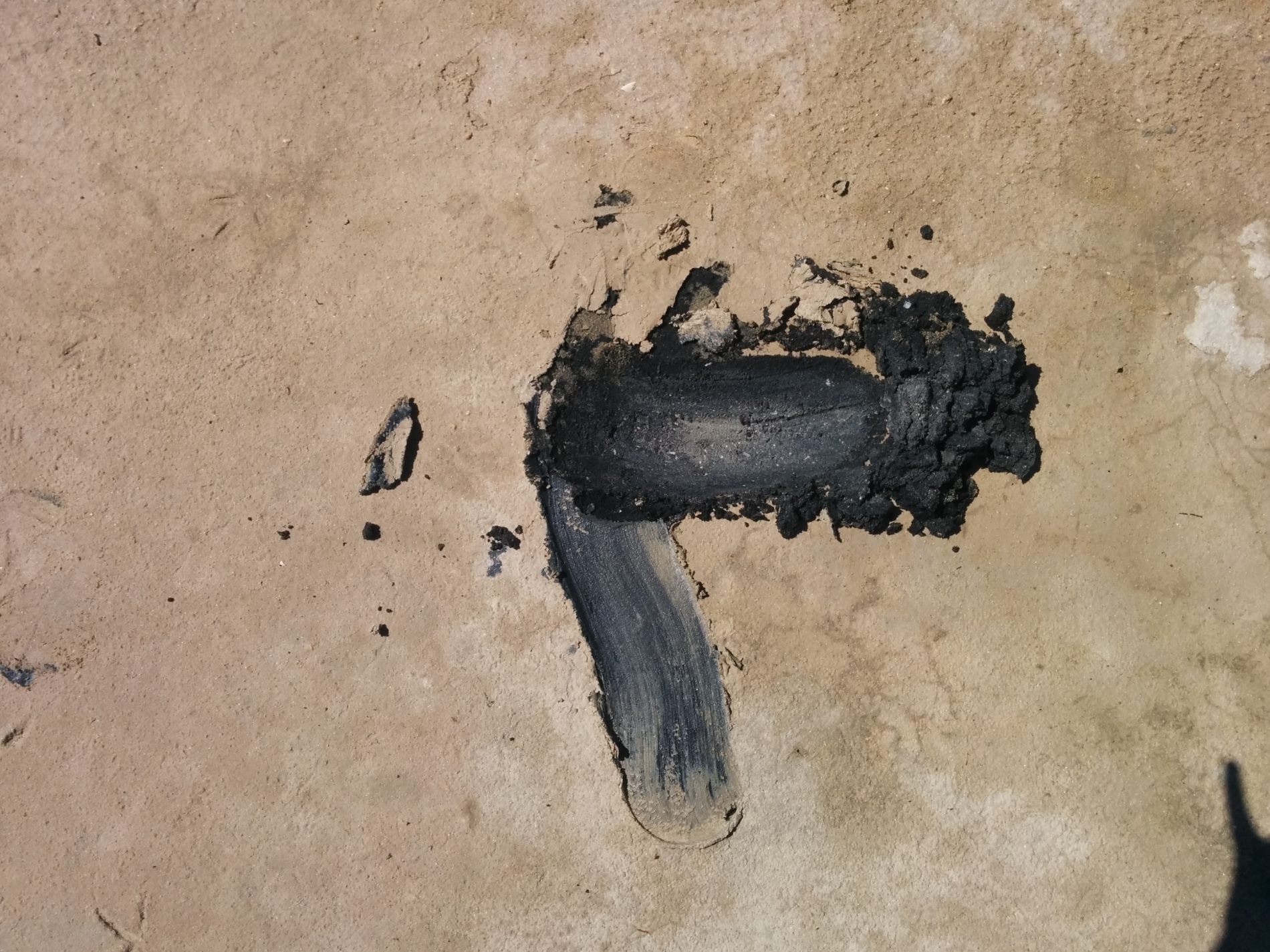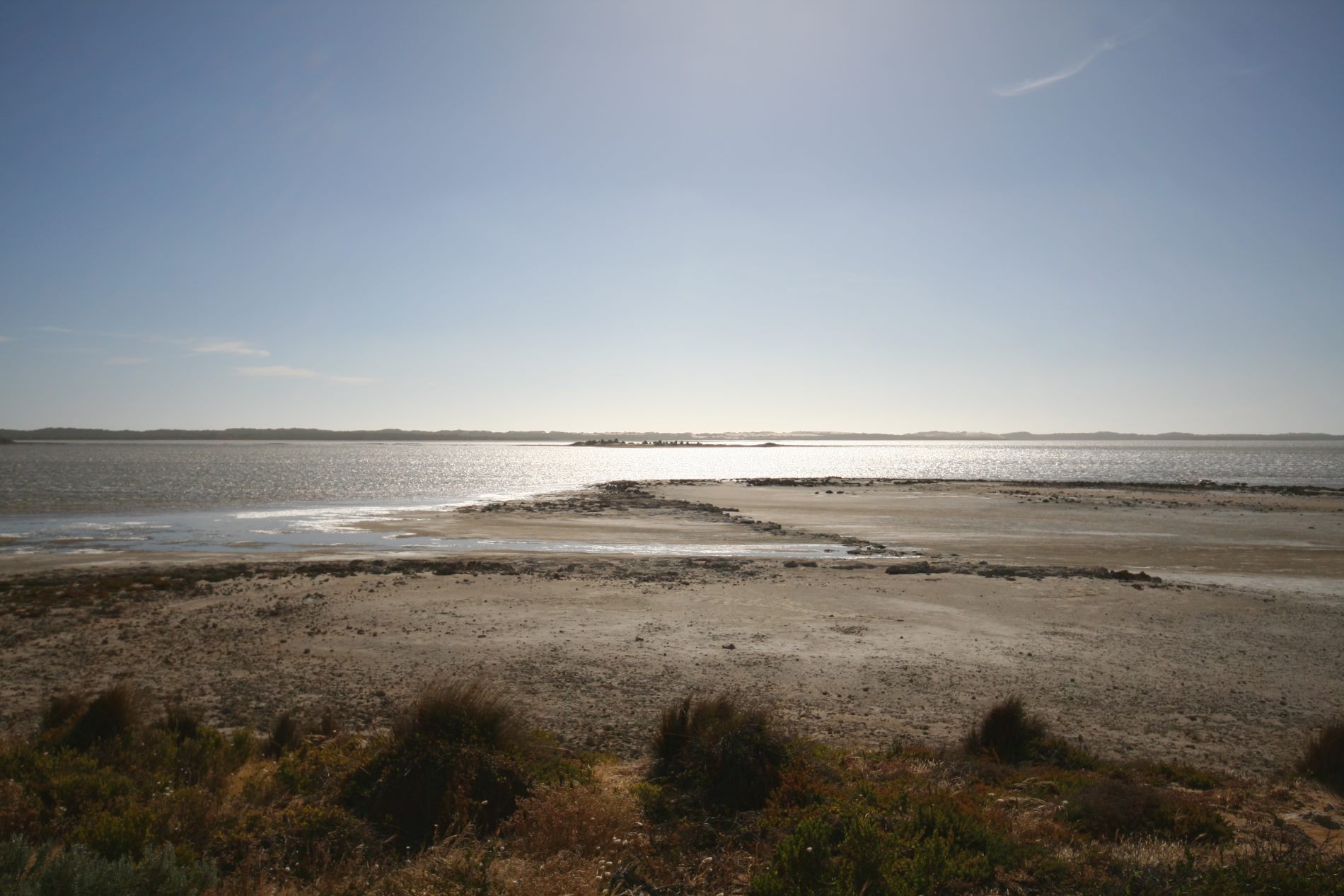Brine shrimp and deep time
An encounter with brine shrimp and deep time
Julie* and I walked carefully along the stark white sand of the banks of the Coorong. I was undertaking an interview for research on the histories of wetlands in the Murray-Darling Basin. Julie is a long-time resident of a small settlement located about a third of the way south from the mouth of the Murray River, along the Coorong lagoon in South Australia. This lagoon is one of Australia’s icon sites for the Living Murray initiative and listed on the Ramsar Convention for Wetlands of International Importance, known particularly for its birdlife. It was summer and the water was low, exposing a wide shoreline with such a small incline that it looked almost flat; a sign of the shallowness of this part of the lagoon. In the distance, across the water, were ‘The Hummocks,’ the sand dunes of Younghusband Peninsula, Karangk in the local Aboriginal languages of the Tananakeld. This peninsula was the setting of Colin Thiele’s novel Storm Boy, a coming of age story that centres on the friendship between a boy and a pelican, that takes place against a national context of the Aboriginal land rights and environment movements of the 1960s. From the opposite shore and half a century later, we find ourselves at another, related, possible turning point in the Anthropocene.

From the moment we stepped on to the sand, Julie told me to be careful, that the shore was slippery. I began slowly, warily, but found the sand was firm and had a rough friction. I started to walk more confidently. We discussed the changes Julie had seen on the Coorong over the last fifteen years. The most recent drought, the Millennium Drought, infused our discussion. It had lasted longer here than elsewhere, from at least 2000 to 2011. Julie told me how the humans and non-humans reliant on the waters of the Coorong had suffered. Water managers had not let fresh water though the barrages, built in the 1930s to protect irrigation interests. This meant that the Coorong did not receive freshwater inflows and became, in places, saltier than seawater. The pelicans which now frequently caught our attention had for a time stopped breeding on the nearby islands in the lagoon, other birds had also stopped breeding here too, fish reduced in number, and people left the area as some industries could not function without more freshwater.
Julie turned to positive changes since the drought broke. Ruppia tuberosa, an aquatic plant that provided food for many water birds, was gradually repopulating the shoreline. The pelicans were back. As we began to return to the grassy bank I suddenly slipped in the sand. Julie said ‘look, that’s the briney shrimp.’ I looked where my shoe had scraped back what I now saw was just a thin layer of white sand. Underneath was what appeared to be black clay. This is what had been slippery. I asked Julie, ‘the black stuff, is … shrimp?” ‘Yes!’ She explained that during the drought the water in the southern lagoon of the Coorong had reached a level so salty that large numbers of the dormant brine shrimp had hatched. Others have said that a reduction in the number of fish predators meant that the shrimp had thrived. The decayed bodies of the shrimp formed a layer of black matter. They had been there, waiting, for just the right conditions. So many hatched that Banded Stilts, birds that normally fed on these creatures after floods in ephemeral, arid lakes, descended on the area for a feeding frenzy. Some, then, had flourished during the drought. Yet many people on the Coorong had seen this burst of life as the death knell for the wetland. Julie had not. Clearly, Julie explained, while this was in some ways an unusual event for the Coorong, it must have happened before. Yet, there was something different about this drought too.

While Australia is, in the words of Dorothea Mackellar, a ‘land of drought and flooding rains,’ the Bureau of Meteorology declared the Millennium Drought to have been linked to climate change. This, together with significant changes to the Murray River system from large dams and more intensive agriculture in the twentieth century, along with the diversion of local inflows into the southern lagoon, had opened up an uncertain future for many in the area. In light of expected permanent changes, how could these sorts of these events now be interpreted? Droughts and shrimp hatchings resonated with the deep rhythms of this continent, only relatively recently recognised in Western science. In the Anthropocene they take on a new significance, rendered both familiar and unfamiliar at the same time. The decomposed bodies of the shrimp that formed such a distinct black layer brought us into the multiple temporalities and scales of this continent’s history and of the Anthropocene, of deep time and upstream–downstream Murray River politics, of international environmental conventions and local industry, of unexpected and expected consequences, of possible winners and losers in the Anthropocene. The black layer may not last, but the shrimp will be in the Coorong lagoon, waiting, perhaps playing the long game in a new epoch.
Emily O’Gorman is writing a book about the wetlands of the Murray-Darling Basin.
*Names have been changed to protect the identity of research participants.

